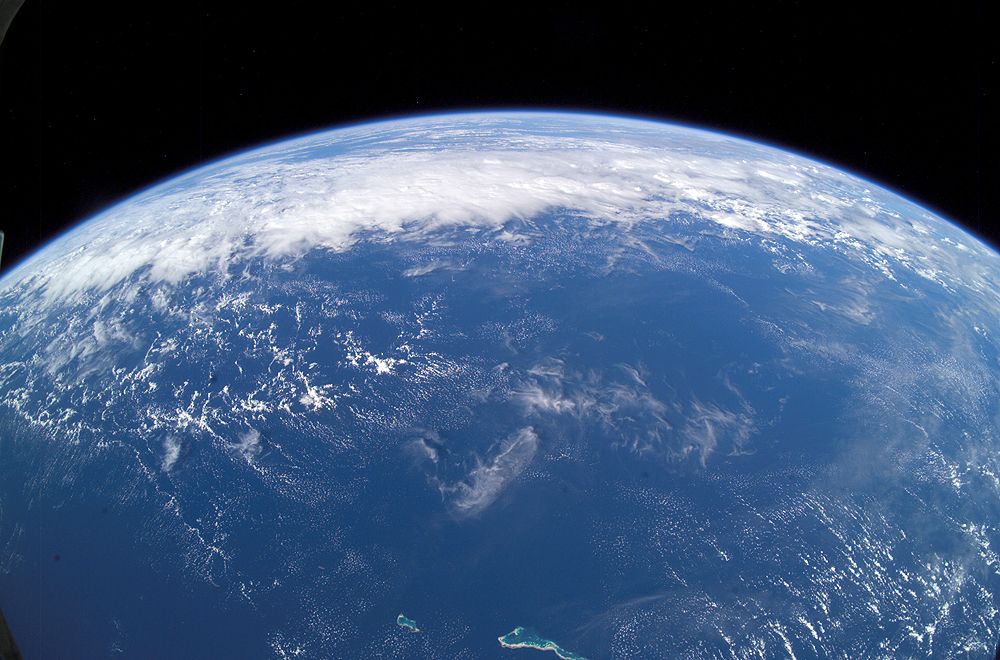A New Study Suggests How We Could Find Advanced Civilizations that Ran Out of Fusion Fuel

When it comes to our modern society and the many crises we face, there is little doubt that fusion power is the way of the future. The technology not only offers abundant power that could solve the energy crisis, it does so in a clean and sustainable way. As long as our supplies of deuterium (H2) and helium-3 hold up. In a recent study, a team of researchers considered how evidence of deuterium-deuterium (DD) fusion could be used as a potential technosignature in the Search for Extraterrestrial Intelligence (SETI).
Background of the Study
The study was conducted by David C. Catling and Joshua Krissansen-Totton of the Department of Earth & Space Sciences and the Virtual Planetary Laboratory (VPL) at the University of Washington (respectively) and Tyler D. Robinson of the VPL and the Lunar & Planetary Laboratory (LPL) at the University of Arizona. In their paper, which is set to appear in the Astrophysical Journal, the team considered how long-lived extraterrestrial civilizations may deplete their supplies of deuterium, which would be detectable by space telescopes.
At the heart of SETI lies the assumption that advanced civilizations have existed in our galaxy long before humanity. If humanity can conceive of something (with sound physics), a more advanced civilization is likely to have already built it. Many SETI researchers and scientists suggest that advanced civilizations will turn to fusion power to meet their growing energy needs as they continue to ascend the Kardashev Scale.
Technosignatures: Evidence from Fusion Fuel
This theory is somewhat epidemic, as other forms of energy (fossil fuels, solar, wind, nuclear, hydroelectric, etc.) are either finite or inefficient. Space-based solar power is a viable option since it can provide a steady supply of energy that isn't subject to intermittency or weather patterns. Nonetheless, nuclear fusion is considered a leading contender for future energy needs because of its efficiency and energy density. It is estimated that one gram of hydrogen fuel could generate as much as 90,000 kilowatt-hours of energy — the equivalent of 11 metric tons (12 U.S. tons) of coal.
Moreover, deuterium has a natural abundance in Earth's oceans of about one atom of deuterium in every 6,420 atoms of hydrogen. This deuterium interacts with water molecules and will replace one or both hydrogen atoms to create “semi-heavy water” (HOD or DOH) and sometimes “heavy water” (D2O). This works out to 4.85×1013 or 48.5 billion metric tons (5.346×1013 U.S. tons) of deuterium. The research team emphasizes that extracting deuterium from an ocean would lower its ratio of deuterium-to-hydrogen (D/H), which could be detectable in atmospheric water vapor, while the helium produced in the nuclear reactions would escape to space.
Research Findings
In recent years, it has been proposed that excess carbon dioxide and radioactive isotopes in an exoplanet's atmosphere could be used to infer the presence of an industrial civilization. Similarly, low values of D/H in an exoplanet's atmosphere (along with helium) could also signal a highly advanced and long-lived civilization. As Catling explained in a recent interview with Phys.org, this possibility is one he began considering years ago, laying the groundwork for their research.
“I didn't do much with this germ of idea until I was co-organizing an astrobiology meeting last year at Green Bank Observatory in West Virginia,” said Catling. “Measuring the D/H ratio in water vapor on exoplanets is certainly not a piece of cake. But it’s not a pipe dream either.”
Modeling Long-Lived Civilizations
To predict what an advanced civilization reliant on DD fusion would resemble, Catling and his colleagues projected what Earth might look like by 2100. By this time, it is expected that the global population will reach 10.4 billion, and fusion power is projected to yield 100 Terawatts (TW). They multiplied this figure by a factor of ten (1,000 TW) for a more advanced civilization, determining that they could reduce the D/H value of an Earth-like ocean to match that of the interstellar medium (ISM) in approximately 170 million years.
Detectability of D/H Values
The intriguing aspect of this approach is that the low D/H values in an exoplanet's atmosphere can persist long after a civilization has become extinct, migrated off-world, or ascended to even more significant advancements, often referred to as "transcension."
In terms of search strategies, the research team utilized the Spectral Mapping Atmospheric Radiative Transfer (SMART) model to identify specific wavelengths and emission lines for HDO and H2O. These findings will significantly aid future investigations involving the capabilities of the James Webb Space Telescope (JWST), NASA's proposed Habitable Worlds Observatory (HWO), and the Large Interferometer For Exoplanets (LIFE).
Future Directions
"It’s up to the engineers and scientists designing [HWO] and [LIFE] to see if measuring D/H on exoplanets might be an achievable goal. What we can say, so far, is that looking for D/H from LIFE appears to be feasible for exoplanets with plenty of atmospheric water vapor in a region of the spectrum around 8 microns wavelength." – Catling
In conclusion, the research poses essential questions regarding our understanding of extraterrestrial civilizations and their energy needs. The detectability of D/H ratios is a crucial element in the ongoing search for life beyond our planet, illuminating the potential for recognition of advanced civilizations long after they have depleted their fusion supplies.
For More Information
Further readings include:
- Phys.org Article
- Astrophysical Journal Paper
- SETI Overview
- Kardashev Scale Details
- Habitable Worlds Observatory
The findings presented here are not merely speculative; they offer a scientifically-grounded framework for how we can approach our search for life beyond Earth, particularly among civilizations that have thrived and potentially dwindled due to the depletion of resources like deuterium.
Reference: Universe Today



